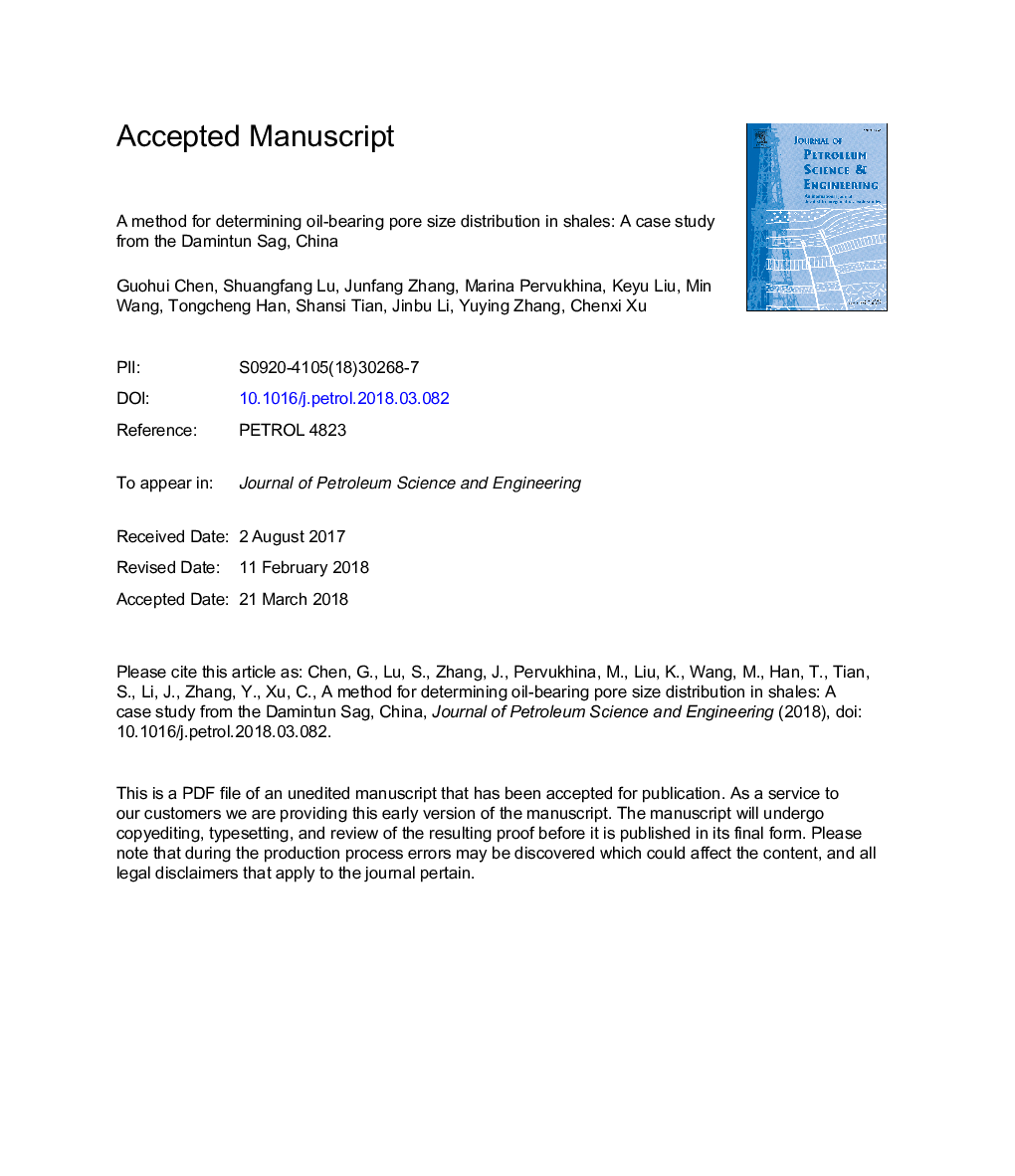| Article ID | Journal | Published Year | Pages | File Type |
|---|---|---|---|---|
| 8124958 | Journal of Petroleum Science and Engineering | 2018 | 23 Pages |
Abstract
A good understanding of oil-bearing pore size distribution (PSD) in shales is crucial for determining reservoir sweet-spots. In this paper, we determined the oil-bearing PSD in lacustrine shales at peak oil generation by comparing PSDs between the extracted and un-extracted shale samples, and by relating the difference in PSDs between the extracted and un-extracted shale samples to the oil content in shales. It is found that while the specific pore volume (SPV) of meso pores are nearly 8 times as large as that of micro pores, macro pores contribute to the majority of the pore volume in lacustrine shales at peak oil generation. SPVs of the extracted samples are generally larger than that of the un-extracted ones. The oil-bearing PSD in pores with sizes up to 80â¯nm were obtained by subtracting SPVs of the un-extracted samples from that of the extracted ones within specific pore size intervals. The oil-bearing mechanism was further investigated by linking the oil-bearing PSD to the total oil content obtained from pyrolysis experiments. It is found that the content of oil residing in the micro and meso pores is significantly less than the total oil content, indicating that the oil is mainly contained in the macro pores. Therefore, the abundance and distribution of macro pores in lacustrine shales at peak oil generation are critical factors of a shale oil reservoir.
Related Topics
Physical Sciences and Engineering
Earth and Planetary Sciences
Economic Geology
Authors
Guohui Chen, Shuangfang Lu, Junfang Zhang, Marina Pervukhina, Keyu Liu, Min Wang, Tongcheng Han, Shansi Tian, Jinbu Li, Yuying Zhang, Chenxi Xu,
